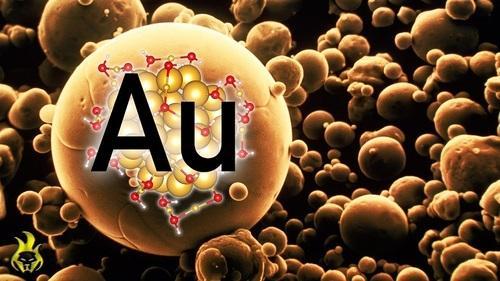Surface nanoplasm Surface plasmons for gold nanoparticles (PhD in nano-microelectronics)
Researcher and author: Dr. ( Afshin Rashid)
Note: The interaction of gold nanoparticles with light is strongly determined by their environment, size and physical dimensions. The oscillating electric fields of a light beam emitted in the vicinity of a nanocolloid particle interfere with the free electrons, causing a coordinated oscillation of the electron charge that corresponds to the frequency of the visible light. These resonant oscillations are known as surface plasmons. For small monoparticle gold nanoparticles (30 nm), the surface plasmon resonance phenomenon causes light to be absorbed in the blue-spectrum (یف 450 nm) while red light (700 نور nm) is reflected.
Gold is a soft, malleable, bright yellow metal that does not rust or darken in the presence of air and water. It can be found purely in nature in the form of grains or fragments of rocks, minerals. Crystallized and alluvial precipitated. The chemical symbol for this element, Au, is derived from the Latin name aurum, meaning "dawn glow." Scratching and corrosion are distinct colors, unresponsive to other elements, properties that are rarely seen in other metals. One gram of this element can be hammered until it spreads to the size of a sheet of one square meter.
Nanoparticles are highly regarded both in industry and in the natural sciences due to their widespread use. While natural materials have fixed physical properties regardless of size, the size of a nanoparticle determines its physical and chemical properties. Therefore, the properties of a substance change as its size approaches the nanoscale and the percentage of atoms on the surface of the material becomes significant. An important feature of all nanostructures is that the number of surface atoms in them is greater than the number of volume atoms. This ratio increases with decreasing nanoparticle size. Therefore, nanoparticle size is an important feature. The range of change in nanoparticle activity depends on the nature and shape of the nanostructure. With However, if the energy field of nano-energy electromagnetic radiation is comparable if certain range The wavelength changes dramatically with the occurrence of chemical reactions in the irradiated material. The activity of nanoparticles up to 100 nm will be significant. Nanoparticle surface atoms are not energy compensated. In general, the results of nanoparticle energy growth can be expressed as the total energy of the atomic surface atoms. The freedom of movement of atoms on the surface of nanostructures is limited, and only vibrational movements and the movement of electrons are possible. These two electro-kinetic reactions are interdependent because the displacement of the electron clouds of the atoms inevitably changes the vibrational frequencies of the bonds of the nanoparticle atoms . On the other hand, the displacement of capacitance electrons in bonds changes the polarity of bonds and objects called supermolecules .
Conclusion :
For small monoparticle gold nanoparticles (30 nm), the surface plasmon resonance phenomenon causes light to be absorbed in the blue part of the spectrum (~450 nm) while red light (700 nm) is reflected.
Researcher and author: Dr. ( Afshin Rashid)
PhD in Nano-Microelectronics




